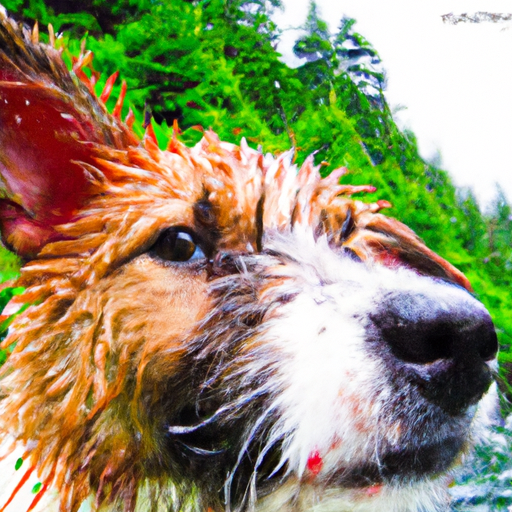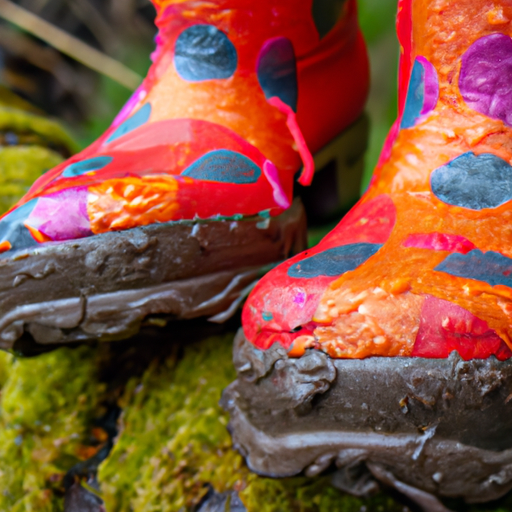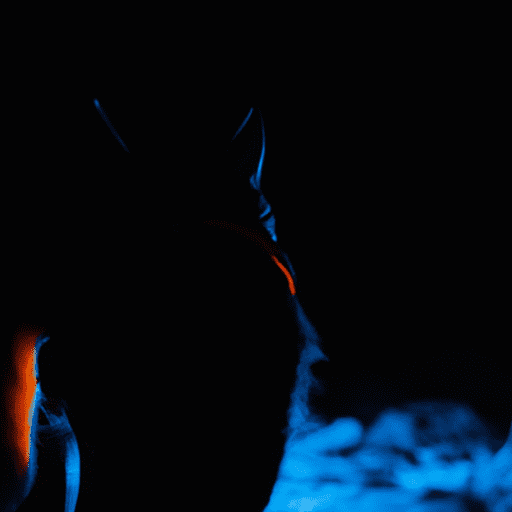Imagine stepping out into the crisp night air, the stars twinkling above you as you embark on a thrilling adventure with your furry friend by your side. Night hiking with your dog brings a whole new level of excitement and bonding as you navigate the wilderness under the glow of the moon. With this article, we will explore the joys and practicalities of exploring the great outdoors with your four-legged companion, providing you with tips and tricks to ensure a safe and memorable journey. So strap on your headlamp, grab your dog's leash, and get ready to embark on an unforgettable nighttime expedition.
Choosing the Right Trail
When it comes to night hiking with your dog, choosing the right trail is essential. Consider the length and difficulty of the trail. If you and your furry friend are just starting out, opt for a shorter and easier trail to avoid exhaustion. As you gain more experience, you can gradually increase the length and difficulty of your hikes. Remember, it's important to choose a trail that matches both your abilities and your dog's energy level.
Another crucial factor to consider when selecting a trail is pet restrictions. Some trails may have specific rules or regulations regarding dogs. Make sure you research and adhere to these restrictions to ensure a smooth and enjoyable hiking experience for everyone. You don't want to arrive at a trail only to find out that dogs are not allowed or that they need to be kept on a leash at all times.
Researching safety and wildlife encounters is also vital before embarking on a night hike with your dog. Some trails may be known for wildlife sightings or potential dangers such as snakes or predators. Take the time to familiarize yourself with any potential risks and prepare accordingly. This will help ensure the safety of both you and your furry friend throughout the hike.
Preparing for the Hike
Before heading out on your night hike with your dog, there are a few essential preparations you need to make. First and foremost, make sure your dog is wearing a collar with identification tags. In the unlikely event that you and your furry friend get separated, having visible identification can greatly increase the chances of a safe reunion. Additionally, always keep your dog on a leash during the hike to prevent them from wandering off or getting into potentially dangerous situations.
Ensuring proper vaccinations and health checks is also crucial. Schedule a visit to your veterinarian to make sure your dog is up to date on all necessary vaccinations. This will help protect them from diseases and potential health risks along the trail. A health check will also ensure that your dog is fit for the hike and can handle the physical exertion.
Don't forget to pack the doggy essentials! Bring enough water and food for both you and your furry friend. Staying hydrated and well-nourished is important for both of you during the hike. Additionally, don't forget to bring waste bags to clean up after your dog. Keeping the trail clean and respecting the environment is essential for fellow hikers and the ecosystem.
Special Considerations for Night Hiking
Night hiking requires some extra considerations when it comes to your dog's gear. Make sure they have appropriate gear such as a reflective collar or vest to increase their visibility in the dark. This will help you keep an eye on them and prevent any accidents or mishaps. Additionally, consider getting a glow-in-the-dark or LED light attachment for their collar to further enhance their visibility.
Furthermore, your own lighting and visibility are crucial during a night hike. Carry a headlamp or flashlight to illuminate the trail and help you navigate safely. This will also make it easier for you to keep an eye on your dog and ensure their safety. Choose a headlamp or flashlight with a comfortable and adjustable strap so that you can easily wear it without it becoming a hindrance.
Choosing the right time is another important consideration for night hiking with your dog. While it may be tempting to start the hike as soon as it gets dark, it's essential to select a time when you have enough visibility to navigate the trail effectively. Starting the hike just after sunset can provide a good balance of darkness and visibility, allowing you to enjoy the nighttime wilderness experience while still maintaining safety.
Safety Measures and Emergency Preparedness
When venturing into the wilderness, it's crucial to let someone know about your plans. Before heading out on a night hike, inform a family member or friend about your intended trail, estimated time of return, and any emergency contact information they might need. This way, if anything were to go wrong or you fail to return on time, someone is aware of your whereabouts and can take appropriate action.
Carrying a first aid kit is another safety measure that should not be overlooked. Accidents can happen, and being prepared with essential medical supplies can make a significant difference in an emergency situation. Make sure your first aid kit includes items like bandages, antiseptic wipes, tweezers, and any necessary medications specific to you or your dog.
Pack extra supplies such as water, food, and clothing. It's always better to be overprepared than underprepared, especially when hiking at night. Bring extra water for both you and your dog, as well as snacks to keep your energy levels up. Additionally, pack an extra layer of clothing and a lightweight emergency blanket in case temperatures drop unexpectedly.
Managing Your Dog's Behavior
Properly managing your dog's behavior is essential for a safe and enjoyable night hike. Make sure your furry friend is trained in basic commands such as sit, stay, and come. These commands will help you control your dog and prevent them from potentially dangerous situations. Practice these commands regularly, both during hikes and in everyday situations, so that they become second nature to your dog.
Teaching proper trail etiquette is also important. Train your dog to walk politely on a leash, keeping them close to you and avoiding excessive pulling or lunging. This will not only ensure their safety but also contribute to a peaceful and enjoyable hiking experience for others hiking on the trail. Remember to always clean up after your dog and dispose of waste properly to maintain a clean and respectful environment.
Preventing wildlife disturbances is another crucial aspect of managing your dog's behavior. Wildlife encounters can be unpredictable and potentially dangerous, both for you and the animals. Train your dog to stay calm and avoid chasing or approaching wildlife. This will help protect both your pet and the wildlife you encounter along the trail.
Dealing with Potential Hazards
When hiking at night, it's important to be aware of potential hazards that may arise. Educate yourself about poisonous plants and insects that could be present along the trail. This knowledge will help you avoid contact with these hazards and prevent any discomfort or harm to yourself and your dog. If you suspect your dog has come into contact with a poisonous plant or insect, seek veterinary care immediately.
Wild animal encounters are another potential hazard to be mindful of. While it can be exciting to spot wildlife during a night hike, it's important to keep a safe distance and not disturb or provoke the animals. Research the wildlife that may be present in the area and learn how to react in case of an encounter. In some cases, it may be necessary to modify your route or turn back if the presence of wildlife poses a significant risk.
Extreme weather conditions, such as storms or sudden drops in temperature, can also present hazards during a night hike. Keep an eye on the weather forecast before your hike and be prepared for any changes. Pack appropriate clothing and gear to protect yourself and your dog from the elements. If the conditions become too severe, consider postponing or rescheduling your hike for another time when the weather is more favorable.
Navigating the Trail at Night
Navigating the trail at night requires some specific considerations to ensure you and your dog stay on the right path. Choose a familiar trail that you have previously hiked during the day. This will help you maintain your bearings and navigate with greater ease in the darkness. Familiarity with the trail will also give you a better sense of any potential dangers or landmarks you may encounter along the way.
Using reflective markers or glow sticks can be incredibly helpful for guiding your way in the dark. Attach reflective markers or tie glow sticks to branches or stakes along the trail to create a visual path to follow. This will make it easier to stay on track and avoid any wrong turns or confusion. Additionally, having these markers in place can also help you locate the trail more easily if you need to backtrack or find your way back.
Carry a compass or GPS device to help you navigate accurately. A compass can provide a sense of direction and help you stay on course. If you prefer a more high-tech option, a GPS device can give you precise coordinates and track your route. Whichever method you choose, make sure you are familiar with how to use it before heading out on the hike. This will help prevent any navigational mishaps or getting lost in the dark.
Nighttime Safety Tips for Your Dog
While ensuring your own safety is important, it's equally crucial to take care of your dog during a night hike. Protecting their paws is essential, especially if the trail surface is rough or includes rocky terrain. Consider using dog booties to provide additional protection and prevent injuries. If booties are not an option, check your dog's paws regularly for any cuts, scrapes, or irritations and address them promptly.
Monitoring your dog's body temperature is also vital. Dogs can overheat or become too cold, especially when exerting themselves during a hike. Keep an eye on your dog and watch for signs of excessive panting, excessive shivering, or difficulty walking. If you notice any of these symptoms, take a break, offer water, and adjust your dog's clothing or shelter to help regulate their body temperature.
Be aware of strain and fatigue in your dog. While they may be excited to explore the wilderness with you, it's important to recognize when they need a break. Allow your furry friend to rest and recover if they show signs of exhaustion or fatigue. Pushing them too hard can lead to injuries or health issues. Remember, it's better to plan shorter hikes initially and gradually increase the distance and difficulty as your dog builds up their stamina.
Enjoying the Nighttime Wilderness Experience
Night hiking with your dog offers a unique opportunity to experience the wilderness in a whole new way. Take the time to appreciate the sounds and scents of the nighttime environment. Listen for the rustle of leaves or the distant calls of nocturnal animals. Let your dog explore and indulge their senses, sniffing the trail and taking in the unfamiliar scents.
Observe nocturnal wildlife from a safe distance. While it may be tempting to get closer or interact with animals you encounter, remember that they are wild and should be respected. Use binoculars to get a closer look without disturbing their natural habitat. Watching wildlife in their nocturnal activities can be a fascinating and memorable experience for both you and your furry friend.
Don't forget to take advantage of the unique opportunity for stargazing and night photography. Away from city lights, the night sky can be truly awe-inspiring. Learn about the constellations or take stunning long-exposure photographs of the starry night sky. These moments of stillness and tranquility can enhance the overall experience and create lasting memories.
Post-Hike Care for Your Dog
After a night hike, it's important to provide your dog with proper post-hike care to ensure their well-being. Check thoroughly for ticks or injuries, paying close attention to their paws, legs, and any exposed skin. Remove any ticks you find promptly and clean any wounds or cuts with antiseptic. This will help prevent infection and ensure your dog remains in good health.
Offer fresh water and food to replenish your dog's energy levels. Hydration and nutrition are important after any physical activity, especially a night hike. Provide your furry friend with a meal and plenty of water to rehydrate and refuel their body. This will aid in their recovery and help maintain their overall health.
Reward your dog with extra love and attention. Hiking at night can be an exciting and unique experience for them, so make sure to show your appreciation for their companionship. Give them extra cuddles, playtime, and pampering to let them know how much you enjoyed the adventure together. This positive reinforcement will strengthen the bond between you and your furry friend, making future night hikes even more enjoyable for both of you.
In conclusion, night hiking with your dog can be a thrilling and rewarding experience. By choosing the right trail, preparing adequately, and taking necessary safety precautions, you can create a memorable adventure for both you and your furry friend. Remember to prioritize your dog's well-being, be mindful of potential hazards, and enjoy the beauty and serenity of the nighttime wilderness. With proper planning and care, night hiking can become a cherished activity that strengthens the bond between you and your beloved canine companion.






